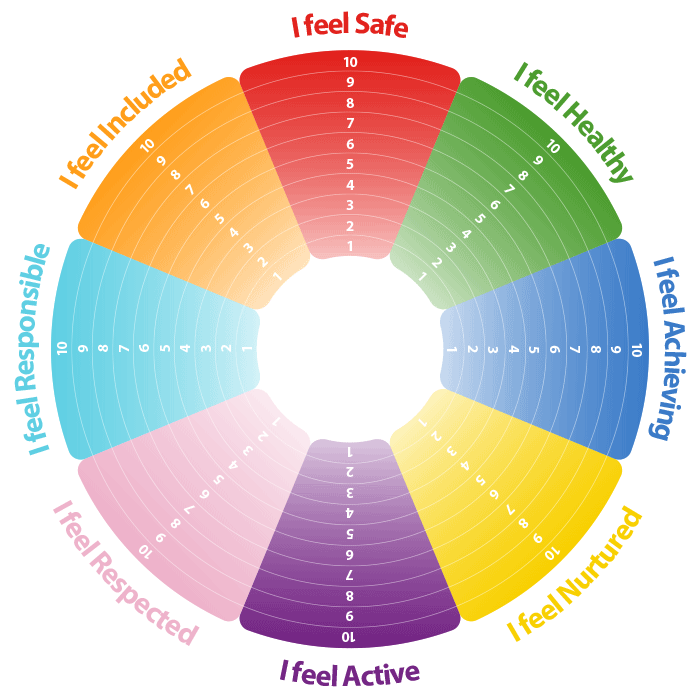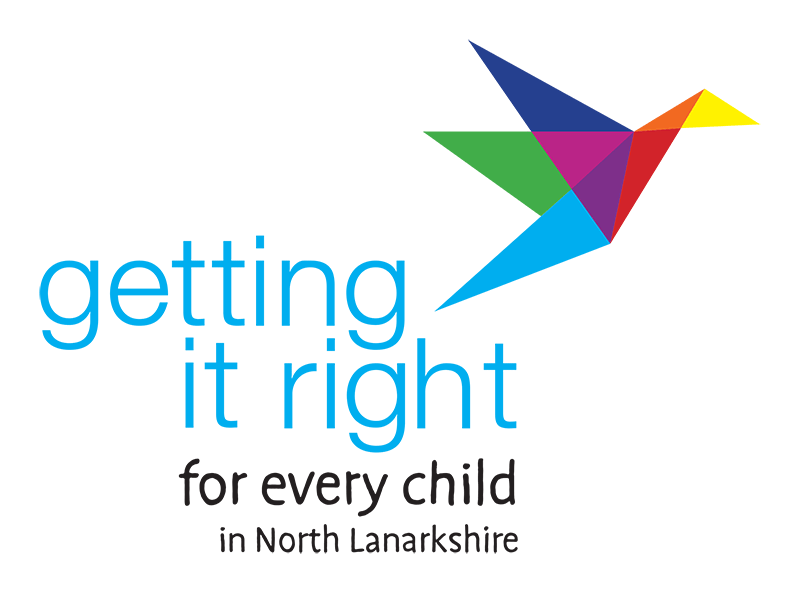Children and Young People
What does GIRFEC mean for me?
Most of you will have a loving family to support you to grow and develop. Friends, teachers, health visitors, youth workers, and others can also help to make sure that your wellbeing is the best it can be, and that you have all the help, advice and guidance you need as you grow up.
There may be times, however, when you might need some extra advice and help if things are not going so well for you. Getting it right for every child (GIRFEC for short) encourages all the adults in your life to look out for your wellbeing and to offer help if you or your family need it.
The idea behind GIRFEC is that if we can help you when your problems or worries are little, then we can hopefully stop them getting too big for you.
GIRFEC means that the adults in your life have a responsibility to look after your wellbeing and make sure you can become the best you can be.
What is Wellbeing?
Girfec uses 8 words to describe what it looks like when things are going well for children and young people. These 8 words are called the wellbeing indicators (sometimes referred to as Shanarri).
You have the right to be safe and healthy. You should be respected and included, nurtured and responsible. You should get all the encouragement you need to be active and to achieve things in your life.
Wellbeing wheel
To find out more about the wellbeing indicators, click on the wheel below.
You can use the wheel to talk to others about your wellbeing.
Wellbeing web
Want to map out your wellbeing from 1 to 10? (1 = not so good, 10 = brilliant)
Download the Wellbeing web and print off using the link below.

What I think tool
When you are in school, your Named Person or someone who knows you very well might chat with you about your wellbeing, they might use the ‘What I think Tool’. This helps you to write down what you think about the help you receive with your wellbeing and any difficulties you might be having so that you can get the right help from the right people quickly whenever you need it.
What happens if I need help with my wellbeing?
If you have a worry or concern
Most of us need help at some time. You might need help because you are worried about things like homework, social media, relationships, how you are feeling, friends, illness, where you live or something quite different.
There are lots of people who you can talk to if you are worried about yourself or someone you care about. Family and friends are usually who you speak to first, but there are other people you can go to for advice or help too. In school you can talk to your Named Person. Before you start school your Named Person will be your health visitor or family nurse.
Named Person
Every child and young person has a dedicated person in school, called their Named Person, who they can talk to and ask for help, advice or support.
Your Named Person is usually your Head teacher or Depute Head teacher if you attend primary school and if you are at secondary school, your Named Person is usually your Pupil Support Teacher. Your school will have told you who your Named Person is.
If you don’t know who your Named Person is ask someone in school and they will find out for you.
Planning
Sometimes you might need a plan to help things get better for you. In primary school, your class teacher will help with your plan. In secondary school one of the principal teachers usually helps with planning. They can use a ‘Getting it right for me plan’ (Girfme Plan) to help you. The plan will say what is being done to make things better for you. You and your parent or carer will have the opportunity to share comments and ideas to support your plan.
Sometimes you might need a Child’s Plan. This plan is used when you need people from different agencies like health, social work and education to work together to make things better for you.
Lead Professional
If you have a Child’s Plan, an adult from the team that supports you, will be chosen to act as your Lead Professional.
The Lead Professional will make sure you understand what is happening so that you can be involved in the decisions that affect you. They will co-ordinate your plan and check whether all the things that people said they would do are being done. They will also ensure the information in your plan is accurate and up-to-date and is being shared with you and all the people involved in helping you and that it is regularly reviewed to make sure it is supporting your needs.
Sharing my information
GIRFEC is about making sure you get the help you need, when you need it. So when staff from different agencies are working together to support your planning, they may need to share information about you (e.g. your Girfme plan, What I think tool, wellbeing assessments).
Your Named Person will explain what is going to happen. They will usually discuss this with your parents or carers before sharing any information about you. If you are over 12 years of age your Named Person will discuss this with you and your parents will be told unless there is a specific reason not to.
Your Named Person will explain what information is to be shared, with whom and why the information is being shared and what hopes to be achieved by sharing the information?
The laws which set out the rules for what needs to be done when people share information about other people are changing. We will tell you about any changes that will affect you.
Getting it right for every child – Information Sharing Charter – Children and Young People – 2022


